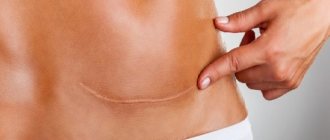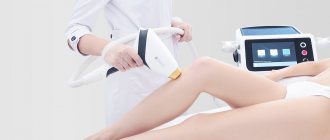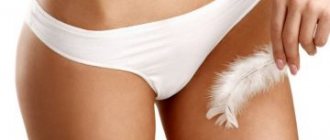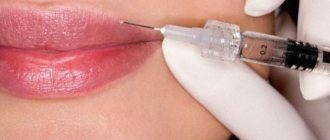Bruises under the eyes can be of pathological origin, a cosmetic defect, or result from injury and blows.
In the latter case, to eliminate bruises, it is enough to use healing ointments and preparations , but their choice depends on the severity of the damage.
If the cause of the appearance of formations is an incorrect lifestyle, no symptomatic treatment is required at all.
How many days does it take for a black eye to go away? Stages by day
Everyone knows that a hematoma changes color during the healing process, and by its shade you can even approximately determine when a person was injured. This change in color is due to the processes occurring in the damaged tissues, and the formation and development of a bruise can be divided into several stages by day and thus understand how long the bruise itself lasts:
- Directly upon impact, the blood vessels located under the skin are damaged. Local internal bleeding opens, and blood leaking through the skin in such cases gives the skin a red tint (the intensity of the color depends on the severity of the injury).
- Thickening and coagulating, the blood begins to darken as a result of oxidative processes occurring in it, and the formations become purple or dark blue. This happens on the first day.
- After some time, leukocytes accumulate in the damaged areas, which destroy red blood cells in hemoglobin. Hemoglobin, in turn, begins to produce a green pigment, as a result of which the hematoma acquires the appropriate shade. This usually happens on day 5-6.
- A little later, the production of bilirubin begins in the damaged tissues, which has a yellow color (a healing bruise also becomes the same color).
At this time, the bruise also becomes less noticeable and is visible less and less every day.
For bruises resulting from blows, it is important to provide first aid in a timely manner. If you do this correctly, the hematoma may not increase in size and will heal faster
If you do this correctly, the hematoma may not increase in size and will heal faster.
First of all, you need to immediately apply something cold to the impact site.
Any item you have on hand will do:
- ice or snow;
- frozen food;
- cold stones and metal objects;
- bottles of water and chilled drinks.
The damaged area must be constantly cooled for the first day and a half.
After about two days, there is no longer a need to cool the hematoma, and instead of ice, warming compresses are applied to such areas - they promote the resorption of decay products formed when the blood vessels are damaged. If, in addition to external manifestations in the form of a bruise, swelling and redness, no other symptoms are observed, you can do without visit to the doctor. But if the patient begins to have headaches after a blow, the conjunctiva noticeably turns red and there is damage to the skin, you should visit the emergency room, where specialists will provide qualified assistance.
What to do for prevention?
To avoid bruising after lip augmentation with hyaluronic acid, it is necessary to follow some preventive measures:
- About a week before the procedure, you should stop taking medications that thin your blood. This list includes Aspirin and medications based on it, as well as Ibuprofen and Diclofenac. Products containing vitamin E also help improve blood clotting. For this reason, their consumption immediately before the procedure should also be avoided.
- Complete abstinence from alcoholic and low-alcohol drinks 5 days before lip augmentation. Alcohol dilates blood vessels and promotes poor blood clotting. This can become a significant hindrance to the master during the procedure.
- You should not do an increase during menstruation or a few days before it. Enlargement is also contraindicated if there is already a bruise in the mouth area - it must first be eliminated.
- It is best to arrive at the salon in advance for your session. This will give the client the opportunity to catch her breath and relax after walking. It is helpful to apply ice to your lips while you wait.
Such tricks will help, if not completely prevent the appearance of bruises on the lips, then at least make them few. In this case, the mouth will not acquire an unnatural bluish tint and the bruises will disappear as quickly as possible, and most importantly, without a trace.
It is rare that a woman manages to avoid bruising after a lip augmentation procedure with hyaluronic acid. To a greater or lesser extent, they appear in most cases. You shouldn’t be upset, because bruises are a temporary phenomenon; you should reassure yourself with the thought that they will definitely disappear soon. In addition, following simple rules before and after the procedure will help to significantly reduce the number and intensity of bruises. The situation is different if a labial hematoma forms after the injections. In this case, you should not wait for it to resolve on its own, but seek help from a qualified specialist. The latter will give a number of tips to eliminate the unpleasant phenomenon.
How to speed up recovery
You can get rid of bruises resulting from minor injuries at home. If you give yourself first aid correctly, the time it takes for dark spots to disappear will be halved.
It is important to immediately apply cold (food ice, a bottle of ice water, frozen dumplings) to the injured area immediately after a bruise forms. To avoid hypothermia, you need to put any cloth on the skin, and then apply cold objects. Exposure to cold should not last longer than 15 minutes
It is useful to take a short break between overdubs. If a cold compress is applied to an arm or leg, it is better to first lift the limb upward. Cold treatment is effective only in the first two days after the formation of a bruise or hematoma
Exposure to cold should not last longer than 15 minutes. It is useful to take a short break between overdubs. If a cold compress is applied to an arm or leg, it is better to first lift the limb upward. Cold treatment is effective only in the first two days after the formation of a bruise or hematoma.
Starting from the second day, you need to make an iodine mesh over the damaged area. After another two days, doctors recommend starting to apply dry heat (a bag of heated salt, a cloth previously steamed with an iron) to the sore spot.
Pharmacy medications for bruises
There are a number of pharmaceutical drugs that can help speed up the process of resorption of bruises and hematomas. These include:
1. Troxevasin ointment. It has a softening effect, restores capillary walls, and reduces the risks of unwanted complications. To achieve a therapeutic effect, you need to rub the product into the skin of the damaged area every three hours. The course is a week.
2. Heparin ointment. Prescribed if the cause of bruising is thrombosis or thrombophlebitis. Its use helps eliminate blood clots and accelerates the processes of regeneration of damaged tissues.
Traditional medicine recipes
When there are no pharmaceuticals at hand, you can speed up the healing process of bruises and hematomas by using some folk treatment recipes. There are a large number of plants in nature with which it is easy to prepare a good absorbent agent. What can you use?
- Cabbage leaf. It needs to be removed from the middle of the head of cabbage, first lightly tapped with a hammer to beat the cutlets, and then applied to the sore spot, secured with a bandage. It is better to do the compress at night.
- Aloe. Its juice has a pronounced regenerating effect. To make the bruise resolve faster, you need to peel one fresh leaf from the top layer, and then use it to wipe the bruised area three times a day.
- Potato starch. Its use helps reduce the healing time of blue spots by half. To achieve the desired result, you need to mix a small amount of powder with cool water. Make a thick paste and apply it in a thick layer to the sore spot. After two days, the bruise will noticeably lighten, and after five days it will completely disappear.
If taking pharmaceutical medications for bruises and traditional medicine does not help get rid of bruises and hematomas, you need to undergo a full examination. An experienced doctor, using laboratory and instrumental diagnostics, will be able to identify the causes of bruising and prescribe treatment that will eliminate the provoking factor, strengthen the vascular walls, and accelerate blood clotting.
Purpose of shut-off valve
This valve is a shut-off valve and is used to shut off the pipeline in the event of an emergency during its operation. The devices can be used not only in industry, but also in everyday life. Most often they are installed in reverse osmosis water purification systems. Here its role is to protect the receiving container from overflow.
Since an increase in pressure at the outlet of the filter worsens the quality of water, a 4-way valve checks (monitors) the operation of the system. If such a situation occurs, the liquid supply line to the filter is shut off until the pressure (level) in the tank decreases.
Float shut-off valves are used at gas stations to protect fuel tanks during the draining of fuel and lubricants from the gas station. In nuclear power plants, fast-acting shut-off valves are used in containment safety systems to protect personnel and the environment from radioactive releases during a containment accident. When the parameters characterizing normal operating conditions are exceeded, a signal from the sensors triggers the shut-off valve, sealing the reactor shell.
On main water pipelines, quick-closing ball valves with electric single-turn drives are installed. When a pipe ruptures, the speed of water movement increases, which generates a signal to close the cut-off valve. It will take a few seconds to shut off the flow and turn the shut-off valve 90°.
Remedies for bruises
If you don’t have enough days left for a black eye to heal naturally, and there’s an important event on your nose where you need to look your best, you should pay attention to auxiliary products. The speed of the effective impact of a particular method depends on:
- degree of damage and depth of impact;
- sensitivity and skin characteristics;
- associated injuries.
Use of pharmaceutical drugs
Special gels, ointments, etc. will help speed up blood circulation, relieve swelling and pain in the damaged area:
- Badyaga. A drug made from natural ingredients (freshwater sponge powder) that can quickly relieve hematomas and restore damage. It is recommended to apply at least 3 times a day;
- Troksivazin. Removes swelling and disperses clotted blood. Apply morning and evening;
- Bruise-off. The active component of the product is leech extract. Affects active healing and removes formations of congealed blood in the capillaries. It is recommended to use it five times a day, and it is worth starting from the moment the hematoma first appears;
- Lyoton. Accelerates blood flow and has a regenerating effect. It will get rid of a bruise in a week, apply the product 3 times a day;
- Heparin ointment. An effective remedy that is used immediately after soft tissue damage. It is advisable not to leave the damaged area without the product at first, renewing the layer every 2-3 hours;
- Iodine. An iodine mesh is applied to a fresh hematoma with a cotton swab. This treatment method is often combined with other drugs.
Exposure to cold and heat
On a fresh bruise, when the skin is covered with a slightly noticeable red tint, you should urgently apply ice wrapped in a towel. Apply it every 20 minutes and hold for the same amount of time. If you don't have a flexible container of ice on hand, use whatever you can find in your freezer. At worst, attach a cold metal object: a spoon, a mug, a decorative element. Alternate products more often and do not leave them on the skin when they are hot.
But if the bruise is several days old, use warm compresses. This method is based on stimulating blood flow and restoring vascular connections. It is better to use at night, as the effect of heat on the facial area relaxes and helps you fall asleep. Rubbing with alcohol-containing substances also helps, but not in the area under the eyes, as there is a high risk of contact with the sensitive membrane of the organ and irritation from the fumes.
Folk remedies
In the fight against bruises, our ancestors learned to do without medications long before they appeared. We used all the gifts of nature, knowing the characteristics and healing properties of each:
- cabbage leaf - scald with boiling water and cut the edges so that the juice comes out, and then apply as a compress for several hours (you can before bedtime);
- aloe - cut the leaf in half and secure it in the hematoma area;
- potatoes - grate and apply the paste to the bruise;
- onion - chop and mix with salt in a ratio of 1 piece to 1 teaspoon;
- garlic - simply smeared with a cut, peeled head or paste;
- banana - use the peel, which is left on the inside for half an hour at the site of the hematoma;
- white beans - boil and puree, and then leave as a compress for several hours;
- Pineapple is another new safe remedy for relieving blood congestion. Fresh fruit juice or a piece of pulp is used, which is used to moisten the damaged area.
Concealing bruises
The technology for visually hiding a hematoma on the face is the same for both a painful injury and a cosmetic defect that prevents you from being beautiful in the morning. If there is a risk of failing an interview, an important meeting or a festive event, because a black eye received the day before takes a long time to disappear, special makeup will help you.
The video will tell you how to remove a five-day-old hematoma from the area between the eyebrows and eyelid:
No less problematic is the elimination of the consequences of damage to the bridge of the nose, a severe head injury, as well as an illness that is not associated with physical damage, but affects the functioning of the entire body, which is why bags and dark circles appear under the eyes. A combination of the right eyeshadow color will help remove them.
In the video you will find tips on grouping cosmetics to hide morning dark circles under the eyes:
Remedies for bruises
If you don’t have enough days left for a black eye to heal naturally, and there’s an important event on your nose where you need to look your best, you should pay attention to auxiliary products. The speed of the effective impact of a particular method depends on:
- degree of damage and depth of impact;
- sensitivity and skin characteristics;
- associated injuries.
Use of pharmaceutical drugs
Special gels, ointments, etc. will help speed up blood circulation, relieve swelling and pain in the damaged area:
- Badyaga. A drug made from natural ingredients (freshwater sponge powder) that can quickly relieve hematomas and restore damage. It is recommended to apply at least 3 times a day;
- Troksivazin. Removes swelling and disperses clotted blood. Apply morning and evening;
- Bruise-off. The active component of the product is leech extract. Affects active healing and removes formations of congealed blood in the capillaries. It is recommended to use it five times a day, and it is worth starting from the moment the hematoma first appears;
- Lyoton. Accelerates blood flow and has a regenerating effect. It will get rid of a bruise in a week, apply the product 3 times a day;
- Heparin ointment. An effective remedy that is used immediately after soft tissue damage. It is advisable not to leave the damaged area without the product at first, renewing the layer every 2-3 hours;
- Iodine. An iodine mesh is applied to a fresh hematoma with a cotton swab. This treatment method is often combined with other drugs.
Exposure to cold and heat
On a fresh bruise, when the skin is covered with a slightly noticeable red tint, you should urgently apply ice wrapped in a towel. Apply it every 20 minutes and hold for the same amount of time. If you don't have a flexible container of ice on hand, use whatever you can find in your freezer. At worst, attach a cold metal object: a spoon, a mug, a decorative element. Alternate products more often and do not leave them on the skin when they are hot.
But if the bruise is several days old, use warm compresses. This method is based on stimulating blood flow and restoring vascular connections. It is better to use at night, as the effect of heat on the facial area relaxes and helps you fall asleep. Rubbing with alcohol-containing substances also helps, but not in the area under the eyes, as there is a high risk of contact with the sensitive membrane of the organ and irritation from the fumes.
Folk remedies
In the fight against bruises, our ancestors learned to do without medications long before they appeared. We used all the gifts of nature, knowing the characteristics and healing properties of each:
- cabbage leaf - scald with boiling water and cut the edges so that the juice comes out, and then apply as a compress for several hours (you can before bedtime);
- aloe - cut the leaf in half and secure it in the hematoma area;
- potatoes - grate and apply the paste to the bruise;
- onion - chop and mix with salt in a ratio of 1 piece to 1 teaspoon;
- garlic - simply smeared with a cut, peeled head or paste;
- banana - use the peel, which is left on the inside for half an hour at the site of the hematoma;
- white beans - boil and puree, and then leave as a compress for several hours;
- Pineapple is another new safe remedy for relieving blood congestion. Fresh fruit juice or a piece of pulp is used, which is used to moisten the damaged area.
Photo
Next, you can see in the photo what the swollen tip of the nose and paranasal areas look like after surgery.
How quickly can you get rid of bruises?
If the bruise is fresh, your goal is to prevent the bruise from growing. Here are some methods:
- Immediately after a bruise appears, you need to cool the area of the injury. Make a compress of ice or some frozen product and leave for 10 minutes. If the pain occurs again, you can repeat the procedure after a while. On the first day after a bruise, you need to touch the bruise as little as possible, much less put pressure on it.
- If a hematoma appears on your leg, try to find an opportunity to lie down and raise your legs above your chest. This way the blood will gradually drain from the damaged area, which will prevent the bruise from growing.
- Apply ointment for bruises, preferably with a cooling effect. This will help relieve swelling and inflammation. Anti-bruise products usually contain heparin or dexpanthenol.
If more than a day has passed since the injury, the bruise has darkened and acquired a blue, purple or greenish color, proceed as follows.
- If a dark bruise has already formed, the injured area should be warmed up. A heating pad, a warm fabric compress or a cream with a warming effect (products with badyaga, capsaicin and snake venom) are suitable for this.
- Take a painkiller with a decongestant effect. The most common ones are aspirin and ibuprofen. They should be taken only if the hematoma site is swollen.
- Ointments with arnica extract, vitamin K, aloe juice, and pineapple extract also help.
- In addition to pharmaceutical drugs, home methods can help treat bruises quite well. For example, an onion compress will be useful due to its high content of vitamin C, which accelerates healing.
- Do you urgently need to hide a bruise? Top it off with a high coverage foundation with yellow undertones.
The skin on the face is thinner than on the body, which means that the blood vessels are closer, and a bruise can form even as a result of minor damage. What to do if your face is decorated with a harmful bruise?
- Inexpensive pharmacy ointments with badyaga, “Troxevasin”, “Bruise OFF” will help.
- Apply ice or iodine to the hematoma.
- Make a compress from raw potatoes or onions and leave for a couple of hours.
- Until the bruise completely disappears, you will have to disguise it with a thick concealer that matches your skin tone. Another option is to apply yellow concealer to the hematoma and cover it with a tone-on-tone product.
It often happens that after invasive cosmetic procedures, bluish marks may appear under the eyes. In this case, do the following:
- Apply a cold compress to the bruise, but do not hold it longer than 15 minutes to avoid overcooling the eye.
- Use ointment with badyagi or leech extract.
- A potato compress will help lighten the hematoma.
After training or an injury, you may notice a bluish spot on your leg or arm. Use the general recommendations for eliminating bruises that we gave above. The best remedies: cold compress, potatoes, celery or parsley, calendula, iodine, badyaga.
So, if you don’t have as much time as it takes for a black eye to go away on its own, you can use some secrets to eliminate the hematoma as quickly as possible. Here is a list of the most effective ones, starting from those from which the effect occurs as quickly as possible:
- Cosmetic disguise. Of course, makeup does not remove painful sensations when touched, but modern products, when applied correctly, will help remove blue discoloration and even “hide” puffiness;
- Applying ice. If you use any cold object in the first minutes after the blow is struck, the appearance of a bruise can even be completely avoided. In any case, holding in the damaged area will take at least 20 minutes to achieve the desired effect. If necessary, the manipulation can be repeated after 3-5 minutes. The product should be applied not to the lower eyelid, but to the cheek in the area of the bruise.
- Medicines: ointments, gels. It is recommended to start using them no earlier than 2 days after the incident and only if there are no abrasions or open wounds on the skin. 5-7 days after use, the hematoma significantly decreases in size and goes away.
- Traditional methods. They don’t help everyone and not right away, but it’s worth a try. Compresses made from medicinal herbs should not be applied to scratches, so as not to provoke an unpleasant burning sensation or renewed bleeding from the wound. This method will bear fruit after a week of stable use.
The fastest way to get rid of a black eye hematoma
A bruise occurs after a blow causes bleeding under the skin. To avoid side glances and unwanted questions, people actively practice a range of procedures in the hope of reducing the appearance of signs of injury. The fastest way to eliminate a black eye is to begin treating the swelling as quickly as possible.
First aid
To reduce swelling, apply a cold compress to the injured area as soon as possible.
The "cooling unit" is assembled by placing ice in a towel or plastic bag. Ice should continue to be applied for 24 to 48 hours after the impact. Along with a cold compress, the underlying swelling is reduced by painkillers containing an anti-inflammatory. After 48 hours, switch from cold to warm compresses. Heat increases blood flow to the site of injury. In addition, it is recommended to get more sleep, which will speed up wound healing.
Myths
One of the most popular myths about quickly getting rid of a bad bruise is applying steak. Save the meat for the barbecue; there is no scientific evidence that fried or raw meat products lighten bruises. The ham from the freezer, of course, cools, but there is a danger of contamination. It is better to wrap it in a towel and use frozen peas as a compress.
Home remedies to help reduce bruises
Tea bags contain natural antioxidants that are anti-inflammatory and reduce swelling. Increase your intake of foods rich in vitamin K (found in alfalfa sprouts), which can speed up the healing of bruises. Vitamin K cream constricts blood vessels.
Drug treatment method
There are a huge number of different ointments that can help solve the problem of treating bruises. All their action is aimed at accelerating the movement of blood through the vessels of the hematoma site, liquefying it and resolving blood clots. So, ointments for treating bruises:
- Heparin is an inexpensive remedy against hemorrhoids and varicose veins, which is also used to combat hematomas, since the heparin inside the composition prevents blood from clotting and promotes the resorption of blood clots. Due to the anesthetic in the composition, the ointment reduces pain.
- Troxevasin is not an ointment, but a fast-acting gel for bruises, considered the most effective. Its main substance, troxerutin, thickens the vascular walls, which minimizes their permeability. Another property of troxerutin is a reduction in the number of blood platelets adhering to the capillary.
- Badyaga. It was previously used against rheumatism, but it is also useful in getting rid of hematomas. This traditional remedy includes silica, a rock from the skeletons of the Badyagov family, which improves blood circulation. Silica has such a structure that the preparation cannot be rubbed too hard, otherwise microtraumas will form. The properties of badyagi also include: stimulating cell regeneration and exfoliation of old skin, stopping inflammation. Badyaga should not be used by children or in areas of abrasions and mucous membranes (eyes, mouth, nostrils).
- Based on bee venom. Increases the speed of blood movement, the immunity of skin cells, as well as the temperature of the application site. Has anti-inflammatory and absorbable effects. All this turns the drug into an effective remedy against bruises. Ointments based on bee venom are: multi-complex apisatron (only for adults), virapine (allowed for children over one year old), consisting only of bee venom with Vaseline.
How many days does it take for a bruise to go away?
Resorption of the hematoma most often lasts at least a week. How long it takes for bruises to go away depends on the severity of the damage: the deeper layers were injured, the longer it will take for full recovery. A hematoma is considered mild if the muscle fibers are not damaged and the skin color changes during the day. In moderate cases, the fibers are damaged and a bruise appears within 3-5 hours. In severe cases, a blue spot forms within 1 to 2 hours; in this case, the affected muscles lose functionality.
If the bruise goes away in 14 days or less, it is considered to have gone away quickly. Most often it goes away within 2-3 weeks. If the impact affected the muscles, hemorrhage lasts for a month, and sometimes longer. If the consequences of the injury do not go away for too long, you should consult a doctor: sometimes a hematoma is a sign of the development of processes dangerous to health and life.
You can speed up recovery by applying temperature. In the first few minutes, the influence of cold is necessary: it will help to narrow the blood vessels and reduce the release of biological fluid beyond their limits. For 2-3 days the effect of heat is beneficial. Under its influence, local blood circulation will accelerate, metabolic processes will become more active and the condition of the skin will be normalized.
The bruise goes away faster if you use Rescuer, Badyagu, Troxevasin ointment. These agents speed up healing and help relieve swelling. If a pathological process caused the appearance of a hematoma, i.e. the vessels are too fragile, you should take special medications that strengthen the vascular walls. Medicines aimed at treating a specific pathology may be required.
Folk remedies are also effective. Stimulates recovery by applying compresses made from fresh leaves of white cabbage or raw potatoes cut into thin layers. Honey compresses and cakes, which need to be kept for a long time, also help. The hematoma will go away faster if you use cottage cheese lotions.
What to do about swelling after blepharoplasty?
To ensure that excess fluid drains from the upper and lower eyelids as quickly as possible, follow these recommendations:
- sleep on your back on a high pillow - with your shoulders and head raised;
- exclude physical exercise and do not bend over for 2 weeks;
- avoid procedures accompanied by heat - baths and saunas, tanning, hot baths, heat from the stove and fireplace;
- do not swim in pools and ponds.
In addition to general ones, there are daily recommendations:
- On the 1st day after blepharoplasty there is zero physical activity. Apply dry cold to your eyelids, treat them with antiseptics, take antibiotics, anti-inflammatory and painkillers prescribed by your doctor.
- On the 2-3rd day, you can take a shower and wash your hair, while your eyes should be protected from water. Avoid activities that dry out the cornea - don't watch TV, don't work on the computer, try to blink less often.
- On the 7-10th day, you can put on contact lenses, start reading and working with a PC without overloading your eyes.
- On days 11-14, you can start using hypoallergenic eye cosmetics.
- On the 15-60th day, you can begin to sleep in a comfortable position, resume normal physical activity and moderate thermal procedures.
In addition, follow your doctor's current instructions during your post-operative check-ups. For example, a specialist may prescribe antiseptic and antiallergic eye drops, antiseptic and absorbable ointments.
Cabbage
Grind the cabbage leaf, or better yet, put it through a meat grinder, and then apply it to the bruise for 20 minutes. Repeat two to three times a day.
IMPORTANT: Yellow bruises can be hidden with purple lipstick. To do this, you need to carefully spread it over the bruise, and then apply powder or makeup base on top.
Potato
Raw grated potatoes, when applied to a bruise, have a resolving and anti-inflammatory effect. You need to keep it for about thirty minutes.
Honey
For extensive bruises, a honey compress helps. To prepare it, mix the yolk, half a tablespoon of flour, a tablespoon of vegetable oil and the same amount of honey. Apply the mixture to the bruise and cover with plastic wrap. You need to keep it for 2-3 hours.
Vodka
Mix half a glass of vodka and half a teaspoon of salt. Moisten a swab with the mixture and apply to the bruise. You need to renew the compress as it dries.
Onion
Finely chop one medium onion and mix with one teaspoon of honey. You can add a tablespoon of dried plantain to the mixture. Apply the compress to the bruise two to three times a day for two hours.
Beetroot and honey
Grate fresh beets on a fine grater, squeeze out the juice and add a tablespoon of honey to the pulp. Apply the mixture to the bruise and secure with a bandage. You need to keep the compress for two to three hours.
Honey and beets for compress
Vinegar and salt
Dissolve a teaspoon of salt in one glass of 9% vinegar. Three times a day, apply a cloth soaked in this solution to the bruise for half an hour.
Onion and salt
Grind 5-6 medium onions, mix with a tablespoon of salt and apply the mixture, wrapped in cloth, to the sore spot three times a day.
IMPORTANT: If you don’t want to rub potatoes, you can simply apply a potato circle to the bruise and hold it for a while
Cause of swelling after lip augmentation
There may be several reasons for severe swelling of the lips:
- excessive dose of the drug,
- after injection of deep density filler,
- infection during injection.
Swelling of the lips after lip augmentation will appear in any case. Even if the thinnest, most modern needles and the minimum dose are used. Foreign liquid penetrates into the tissue. To have a complete understanding of the consequences, a cosmetologist must know in great detail about diseases and the body’s reactions to the drug.
When injecting filler, it is possible to reduce the swelling of the mouth if you do not remove the needle from the skin during the puncture, but simply change the direction. In this case, the affected area will be much smaller.
If swelling is the cause of an allergy, you must take antihistamines and use ointment to treat the skin. For natural swelling, cosmetologists recommend moisturizing creams, applying ice and making compresses from herbal decoctions.
Hyaluronic acid is used to contour and correct lips, filling folds and wrinkles. The method is also used to rejuvenate the neck, arms and décolleté.
What to do with dark circles
How to quickly get rid of a black eye? It is worth summarizing all that has been said and performing the following sequence of actions when a hematoma appears:
- At the initial stage, cold is necessary. Even a plastic bottle filled with cold water will do;
- when blood clotting occurs, you should not miss this moment and apply a special ointment. This moment occurs approximately on the second day. In most cases, heparin ointment is used. For better effect, the frequency of application of the product can be increased to three times a day;
- the next day, in order for the bruise to resolve faster, you need to apply heat to the site of the bruise.
Everything is not as difficult as it seems. If you do everything according to the rules, then you will be able to go out in public without embarrassment within 5-6 days. After which all that remains is to remember what happened.
Pharmacy products
A bruise is one of the most common injuries that occur in everyday life, so the family medicine cabinet must contain means for treatment. The most popular and effective are:
| Name | Photo | Action | Application |
| Troxevasin | The ointment is intended for the treatment of varicose veins, but its action is aimed at activating blood circulation and has a decongestant and healing effect. It is successfully used as first aid for injuries under the eye. If you apply troxevasin to the skin in the first few hours after injury, the bruise will be very small or not appear at all. | For the treatment of hematomas and bruises, Troxevasin is produced in two forms (gel or cream). The bruise is smeared in the morning and evening | |
| Heparin ointment | Heparin, which is part of the ointment, relieves swelling and inflammation of the skin. It has an antithrombotic effect, dissolving existing ones and preventing the appearance of new blood clots under the skin. Benzocaine acts as a local anesthetic and relieves pain | Gently rub a thin layer of ointment into the affected area of the skin. It should be used 2-3 times a day until the inflammation completely disappears. After a 7-day course, further use of the ointment requires consultation with a doctor. | |
| Lyoton | The gel promotes rapid restoration of skin tissue, resolves blood clots formed under the skin, and helps improve blood circulation. | Treatment is carried out for a week, applying ointment twice a day to the area of bruising | |
| Badyaga | The natural component of badyaga has a slight irritating property, which increases blood circulation. The product also has an antibacterial effect | A small amount of ointment is applied in a thin layer to the bruise, left for 20 minutes, then washed off with warm water. You can repeat the procedure 5-6 times during the day. | |
| Bruise OFF | A specially developed product to eliminate bruises. Promotes renewal of lymph in tissues, relieves inflammation, improves blood circulation. Available with or without foundation effect | With regular use of the ointment, from the first minutes after a bruise, you can completely get rid of the bruise within 5 days. Apply 6-7 times a day. |
When using these products, the bruise will disappear faster than in 1 week.
First aid and treatment
Immediately after a person is injured, first aid should be provided. After which you can begin to treat the bruise. The primary actions should be as follows.
- After a blow to the eye or a fall, you should immediately apply ice wrapped in a cloth to the area. Even if you don’t have it at hand, then at worst, a tin can will do. Just apply it to your cheek, not under your eye. The duration of exposure to cold on the tissue should not exceed 20 minutes, after which a break is taken and the procedure is repeated several times. Prolonged exposure to cold can cause tissue frostbite.
- Sometimes this situation is not as simple as it seems. If the bridge of the nose is damaged, the nose will bleed. You should not blow your nose at this time, as air getting under the skin will cause your eyes to swell more. You should not take aspirin at this moment, as it thins the blood and does not allow it to clot; as a result, swelling filled with blood content will appear at the site of the bruise. In such a situation, cold will help. When there is bleeding, gauze swabs soaked in hydrogen peroxide are placed in the nostrils. It is contraindicated to use cotton wool if there is a wound. The lint remains in the wound and can cause suppuration.
- If time is lost, the bruise will last a long time. But all is not lost; there are effective ointments that are applied to the site of the bruise. These are heparin ointment, preparations with extracts of bodyaga, chestnut or leech saliva. You just need to apply them as early as possible to get rid of swelling. The amount of product is moderate. Over time, the dark spot will gradually lighten. It is contraindicated to use such products if there is a wound surface. Ointments and gels should be applied only to intact skin. You can start the procedure from the second day after the injury, supplemented by exposure to dry heat.
The swelling has already gone down, but the hematoma remains? You should know that over time it first becomes greenish, then turns yellow. As already mentioned, cold will initially help with a bruise. But on the second day it is necessary to increase blood flow to the damaged tissues. It will quickly remove dead cells and cleanse the epidermis from the inside. An excellent remedy in this case is a heating pad.
If the bruise is not treated, it may go away in 1.5 weeks. With proper and timely treatment, this period is significantly reduced. The skin under the eye is very thin, so hematomas appear much more clearly, but the bruise here goes away faster than elsewhere due to good blood flow .
Why does a black eye appear after a while after a blow?
The capillaries and blood vessels under the eye are absolutely not protected. The skin around them is thin and delicate. During an impact, damage occurs to the blood vessels - they rupture, and then blood under pressure enters the subcutaneous tissue without compromising the integrity of the skin.
Sometimes it happens that blood gets into the eye itself. In such cases, severe redness of the sclera can be observed.
According to the mechanism of appearance, a bruise is a hematoma - the formation of a cavity in the tissues containing liquid or coagulated blood. When a powerful blow to the eye occurs, the skin around it swells, becomes slightly swollen and painful. A couple of hours after the injury, a bruise forms. Swelling appears due to an inflammatory reaction, and pain from damage to nerve endings.
- The site of the impact is very painful.
- Swelling appears.
- Damaged skin is bright red.
Sometimes the temperature rises.
If you experience the following symptoms, you should immediately consult a doctor:
- Slight dizziness.
- Vomiting and nausea.
- Blurred or sharp deterioration of vision.
Why bruises sometimes don't go away
Sometimes it happens that a bruise, instead of disappearing, remains painful, increases in size and hardens. There are explanations for this development of events:
- The blow was strong and many small blood vessels were damaged, causing large amounts of blood to leak into nearby tissues. Unable to “absorb” so much excess fluid under the skin, the body fences it off, forming a hematoma. The hematoma is not dangerous, but is a source of constant discomfort, so it is better for doctors to remove it.
- The injury occurred in a place where the bone is close to the skin, and because of this, during the impact, she received “her portion of shock.” This incident provoked the release into the body of a certain amount of “bone building material” - calcium. Which, in turn, led to heterotopic ossification, or simply put, the development of myositis. Such a bruise is no longer harmless and so that it does not develop into big problems, the injured person should consult a doctor.
- involves the prescription of hormonal drugs. At first, this treatment gives good results and the person feels significant relief. But treatment with these drugs is a double-edged sword. The fact is that the body usually produces hormones itself, and the adrenal glands do this. When hormones enter the body from the outside, the adrenal glands, so to speak, remain out of work, and gradually cease to function at all. As a result of this, many troubles develop, including Itsenko-Cushing syndrome (disruption of the adrenal glands), accompanied by the constant appearance of unexplained bruises and bruises. That's why:
- Patients suffering from genetic diseases that cause problems with blood clotting (hemophilia), as well as acquired diseases such as cirrhosis of the liver, from time to time unexplained bruises appear on the body, and sometimes develop bleeding that can lead to death.
- Gouty arthritis is another reason why skin pigmentation occurs like a bruise.
Note
. For a bruise to form, the blow must be strong enough. Therefore, you should remember that if an injury occurs in the area of the ribs, leading to the formation of a bruise, this is a reason to worry, because such a bruise indicates that intercostal neuralgia may develop. A bruise in the ankle area indicates at least that, and sometimes even. A bruise in the middle of the back may indicate a spinal bruise, etc.
Dry mushroom poisoning
The question of whether it is possible to be poisoned by dried mushrooms worries many. In fact, you can be poisoned by pickled, salted, boiled, fried, and even dried mushrooms. The method of preparing them does not matter. Experienced mushroom pickers know that mushrooms can undergo mutation over time, so even a person who understands them will not be able to distinguish a real mushroom from a false one. So what difference does it make how they were prepared? Poisonous ones will remain poisonous even after drying.
The only protection against poisoning is knowledge of the mycological characteristics of individual species and the differences between them.
The place of collection is of no small importance. If it occurred in ecologically clean areas, then the risk of poisoning from the product is much lower than that collected along roads and highways
When buying mushrooms at the market, you need to ask where they were collected.
The third reason why you can be poisoned by dry mushrooms is if a person has contraindications. It is not recommended to use this product for persons suffering from diseases of the gastrointestinal tract, kidney and liver diseases.
And, finally, the quality of the raw materials used for drying. Mushrooms must be carefully processed. It is impossible to dry old, softened, overripe, or with signs of rotting.
Why does the tip of the nose and other areas swell?
Swelling is a natural reaction of the body after any surgery.
When tissue is damaged, the vascular endoderm is damaged. The blood that is in them flows into the tissues, causing swelling and hematomas. During rhinoplasty, swelling primarily affects the nasal cavity , mucous membrane, as well as the paranasal surface - cheeks, chin. In this regard, nasal breathing may be difficult or absent, hematomas and swelling of the face may appear, the process is accompanied by pain. The intensity of edema depends on the physiological structure of the person and the complexity of the operation. For some, it may be minimal after surgery, for others it may be intense, to the point of swelling of both eyes.
Color change
The size and color of the bruise depend on several factors:
- location relative to the vessels (pulsating hematoma occurs as a result of disruption of a large artery, non-pulsating hematoma occurs due to damage to small capillaries);
- the amount of accumulated blood;
- duration of injury;
- force of mechanical action (the higher it is, the deeper the hemorrhage occurred in the tissue).
The appearance and resorption of a hematoma occurs in several stages, which are accompanied by a change in the shade of the bruise:
- Red-purple. The red color is a consequence of damage in the first hours after the injury. This shade is due to the penetration of red blood cells into the skin tissue, which contain oxyhemoglobin of the corresponding color. During these hours, a person feels the greatest pain, and edema forms in the form of swelling.
- Blue or purple. The next day, the bruise acquires this color because the process of oxidation of oxyhemoglobin in the tissues occurs. Resorption has not yet begun, but the swelling is gradually subsiding.
- Green. The hematoma acquires this shade 5-6 days after injury. This occurs due to the biochemical transformation of hemoglobin, which enters the tissue from red blood cells. Biliverdin is formed, which has a greenish tint. Pain and swelling will disappear by this time.
- Yellow. In the final stage, the bruise turns yellow because biliverdin is converted to bilirubin. Over time, the hematoma will disappear under the influence of macrophages, which absorb dead cells. The yellow spot dissolves and leaves no trace.
Similar phases are observed when a significant volume of blood is released. If ice was applied immediately after the blow, the bruise will not look as noticeable.
Possible consequences
Because the bones
the eyes
are fragile
, they crack from impacts, and
the retina tends to peel off
.
If no treatment is taken, the person will go blind.
.
Sometimes, when struck in the eye area, a rupture of blood vessels inside the skull can occur, and this already entails hemorrhage in the brain.
Important! Under no circumstances should you neglect the treatment of a bruise. If, after the blow, hematomas appear under both eyes (a symptom of glasses), consult a doctor immediately, as this may indicate that the base of the skull is broken. Even the most minor injury in the eye area leads to disastrous consequences
The most dangerous are:
Even the most minor injury to the eye area leads to disastrous consequences. The most dangerous are
:
- large hemorrhage,
which leads to retinal detachment; - hyphema
- accumulation of blood in the anterior chamber of the eye; - hemophthalmos
- hemorrhage in the vitreous body, against this background blindness can occur; - contused eye socket
- causes loss of visual acuity.











